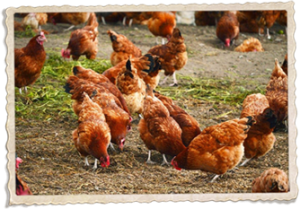When winter comes along, our world becomes much colder and darker. We humans like to stay inside our nicely lit homes, and our chickens are no different. They’ll need their coops to be warm and safe if they’re to survive the winter. But what about your coop’s lighting? Many chicken owners use supplemental lighting to provide their flock with some extra light, but is it the right choice for you? Read on to learn more:
Pros of Supplemental Lighting
- Will boost egg production: Chickens need at least fourteen hours a day of sunlight to lay an egg. When the days get shorter during the wintertime, however, chickens struggle to get the necessary amount of sunlight required to lay eggs. This is why your chickens will not lay as many eggs during the wintertime. However, by adding in supplemental lighting, your chickens will get the sunlight they need to continue laying eggs.
- Provides additional warmth: Chickens are able to handle lower temperatures, but they still need their coop to be warm and comfy. Supplemental lighting in the form of heat lamps can provide light and This will keep your chickens comfortable during even the coldest winter days.
Cons of Supplemental Lighting
- Greater risk of fire: Unfortunately, many supplemental lights can increase your risk of a coop fire. This is especially true if you have a heat lamp. If you decide to install lights, you’ll want to ensure that electrical cords are kept intact and that the lighting is nowhere near your chickens’ bedding.
- Increase costs: While supplemental lighting will help your chickens’ egg production, that does come at a price. The added electricity during the winter months can add up, and for some, may not be worth it for the few extra eggs they receive.
No matter if you choose to install supplemental lighting or not, Chickens for Backyards is here for all your backyard flock needs. Contact us today to learn more!

